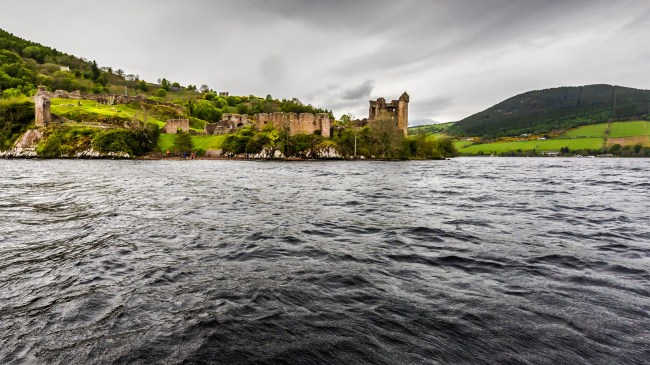iStockphoto
Advanced sonar technology used to explore the depths of Loch Ness has once again picked up a massive anomaly. Could it be that the existence of the fabled Loch Ness Monster has finally been confirmed?
Last week, Shaun Sloggie, a ship captain with Cruise Loch Ness, and maritime pilot Liam McKenzie both claimed that sonar on their vessel detected a large object somewhere deep underneath their boat at a depth of around 98 meters [321 feet].
Sloggie said it was “the biggest thing I’ve ever seen,” adding, “We’ve seen all sorts of fish that shouldn’t be here, but this? This was different.”
Of course, when Sloggie and McKenzie returned to the same location to investigate further, the mysterious object, much like the Loch Ness Monster always does, had disappeared.
Now a new report claims that just a few days after that startling discovery, a Deepscan cruise vessel, which utilizes a radar system specifically designed to detect underwater objects and formations, identified another distinct anomaly in the water’s depths.
“While the exact nature of these readings remains under investigation, preliminary analysis suggests they could represent substantial underwater presences or potentially large aquatic creatures inhabiting the loch,” the report read.
The report also stated, “At the time, we were out on the loch with Aberdeen University for our first official deployment of weeHoloCam and we were passed Urquhart Castle and were heading down to Fort Augustus when we spotted the disturbance on the loch bed.”
Deepscan cruise uses cutting-edge technology to investigate the unique underwater environment of Loch Ness. With the use of sonar and radar systems, a hydrophone and most recently a state-of-the-art holographic camera, Deepscan has been able to provide us with a detailed understanding of the loch to date.
“These radar readings have raised many questions about what lurks in the depths of Loch Ness,” said Nagina Ishaq, General Manager of The Loch Ness Centre. “Our Deepscan cruise has consistently aimed to deepen our understanding of the loch’s ecosystem, and this finding shows that there are still many unknowns about the loch. We are currently working with Loch Ness researchers to conduct further analysis of these readings which hopefully mark a major milestone in the search for Nessie.”
🎥 Nessie hunters have made a “significant finding” while searching for the mythical creature.@LochNessCentre says a radar system from their Deepscan cruise has recorded a “distinct anomaly” in the loch.
📸The Loch Ness Centre pic.twitter.com/Dx0uMDazzF
— MFR News and Sport (@MFRNews) October 9, 2024
These recent sonar readings come on the heels of a swimmer and two canoeists each separately reporting encounters with what they believe may have been the Loch Ness Monster.
They also come shortly after a hydrophone device, which detects and records noises underwater, was deployed 100 feet under the surface of the loch and made a startling discovery.
“You can clearly hear a rhythmic pulse or heartbeat within the recording. We’ve no idea what was causing this sound but it’s very interesting,” said Alan McKenna of the research group Loch Ness Exploration, the group behind the deployment of the underwater microphone.

